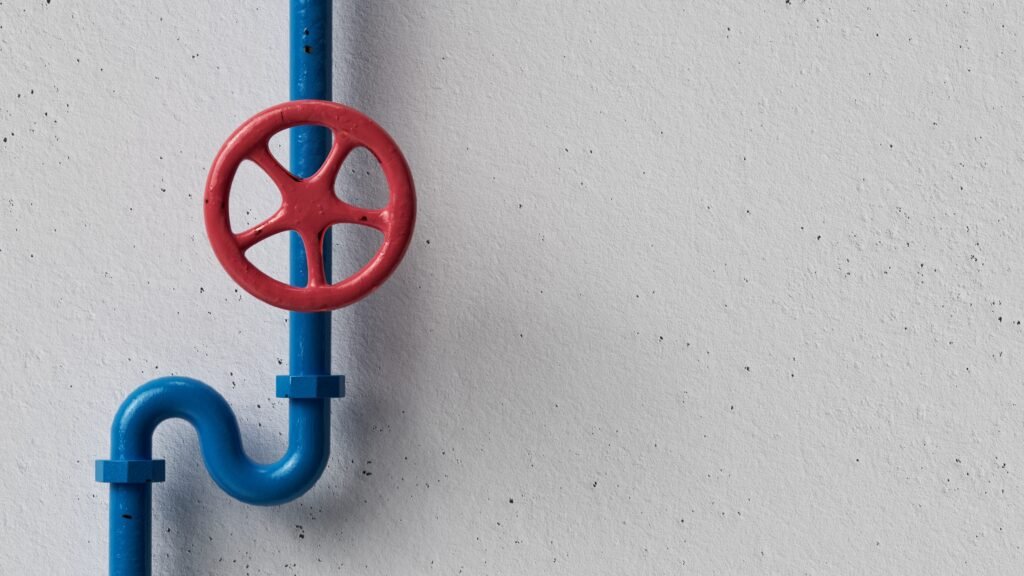
Whether you’re a seasoned scooter enthusiast or a novice rider, taking care of your scooter is essential to ensure its longevity and optimal performance. With our Must-Know Basics for Scooter Maintenance, you’ll learn essential tips and tricks to keep your scooter running smoothly. From checking tire pressure to changing oil, these simple maintenance tasks will not only save you money on repairs but also enhance your overall riding experience. So, buckle up and get ready to hit the pavement with confidence, knowing that your scooter is in top-notch condition.

This image is property of images.unsplash.com.
Check out our product reviews!
Regular Cleaning
Keeping your scooter clean is an essential part of its maintenance routine. Regular cleaning helps to prevent dirt and debris from accumulating, which can lead to damage and deterioration over time. To effectively clean your scooter, you will need a few tools.
Tools needed for cleaning
Gather the following tools before you start cleaning your scooter:
- Soft-bristled brush: This will help you remove dirt and debris from hard-to-reach areas.
- Microfiber cloths: These are gentle on the scooter’s surfaces and help with wiping off any excess cleaning solution.
- Cleaning solution: You can use a mild detergent mixed with water or a specially formulated scooter cleaner.
- Water source: Either a hose or a bucket of water will be needed to rinse off the scooter.
Cleaning the exterior
When cleaning the exterior of your scooter, start by spraying it with water to loosen any dirt or grime. Then, apply the cleaning solution to a microfiber cloth and gently scrub the scooter’s body, being careful not to scratch the paint. Pay attention to areas where dirt tends to accumulate, such as around the wheels and under the seat. Rinse the scooter thoroughly with water to remove any residue, and use a clean microfiber cloth to dry it completely.
Cleaning the wheels and tires
The wheels and tires of your scooter are prone to collecting dirt and road debris. To clean them, first, use a soft-bristled brush to remove any loose dirt and debris. Then, apply the cleaning solution to a cloth or sponge and scrub the wheels and tires. Make sure to clean between the spokes and around the rims. Rinse off the cleaning solution with water and dry the wheels and tires thoroughly.
Cleaning the handlebars and controls
The handlebars and controls of your scooter should also be kept clean to ensure proper functionality. Use a microfiber cloth dampened with the cleaning solution to wipe down the handlebars, switches, and buttons. Pay special attention to any areas that may have accumulated dirt or grease. For hard-to-reach areas, use a soft-bristled brush. Rinse the cloth with clean water and wipe away any excess cleaning solution. Dry the handlebars and controls with a dry cloth to avoid moisture damage.
Inspecting and Replacing Parts
Regularly inspecting and replacing worn or damaged parts is crucial for maintaining the performance and safety of your scooter. Follow these guidelines to ensure your scooter remains in top shape.
Check for loose bolts and screws
Start by inspecting all the bolts and screws on your scooter. Check for any signs of looseness or damage. It’s common for vibrations during rides to cause bolts and screws to become loose over time. Using the appropriate tools, tighten any loose bolts or screws to prevent further damage or potential accidents.
Inspect the brakes and brake pads
Properly functioning brakes are essential for your safety while riding. Inspect the brake calipers, brake discs, and brake lines for any signs of wear or damage. If you notice any cracks or excessive wear, it is recommended to have them checked and replaced by a professional. Additionally, check the brake pads to ensure they have sufficient thickness. Replace any worn-out brake pads to maintain optimal braking performance.
Inspect and clean the air filter
A clogged air filter can impact the scooter’s performance and fuel efficiency. Regularly inspect the air filter for any signs of dirt or debris accumulation. If the filter appears dirty, remove it and clean it with compressed air or a gentle tap to remove any excess dirt. Ensure the air filter is completely dry before reinstalling it.
Replace worn-out tires
Maintaining good tire condition is essential for safe and efficient rides. Regularly inspect your scooter’s tires for signs of wear, such as uneven tread wear, cracks, or bulges. If the tires are past their recommended lifespan or show significant signs of wear, it is crucial to replace them promptly. Riding with worn-out tires can compromise traction and increase the risk of accidents.

This image is property of images.unsplash.com.
Check out our product reviews!
Checking Fluid Levels
Proper fluid levels are critical for the smooth operation and longevity of your scooter’s engine. Regularly check and maintain the following fluid levels to ensure optimal performance.
Checking the fuel level
Before starting your scooter, always check the fuel level. Running out of fuel can lead to engine damage and inconvenience during your ride. Most scooters have a fuel gauge located near the speedometer or a transparent fuel tank, making it easy to monitor the fuel level visually. If the fuel level is low, refill the tank with the recommended type of fuel for your scooter.
Checking the oil level
Engine oil is essential to lubricate and cool the engine’s moving parts. To check the oil level, ensure your scooter is on level ground and the engine is off. Locate the oil dipstick, usually located near the engine. Remove the dipstick, wipe it clean, reinsert it, and then remove it again to inspect the oil level. If the oil level is below the recommended range, add the appropriate type and amount of oil as specified in your scooter’s manual.
Checking the coolant level
Coolant, or antifreeze, helps regulate the engine’s temperature and prevents overheating. Check the coolant level when the engine is cool. Locate the coolant reservoir, typically near the front of the scooter. The reservoir will have a minimum and maximum level indicator. Ensure the coolant level is between these two marks. If the coolant level is low, add the appropriate coolant mixture to bring it to the recommended level.
Refilling fluids
If any of the fluid levels mentioned above are low, refill them according to your scooter’s manual instructions. It is essential to use the recommended fluids and adhere to the proper mixing ratios. Avoid overfilling, as that can lead to leaks and other issues. If you are unsure about the correct fluid types or mixing ratios, consult your scooter’s manual or seek professional advice.
Battery Maintenance
A well-maintained battery is crucial for starting your scooter and powering its electrical systems. Follow these steps to keep your battery in optimal condition.
Checking the battery connections
Regularly inspect the battery connections to ensure they are secure and free of corrosion. Start by locating the battery, usually housed under the seat or in a battery compartment. Check that the battery cables are tightly connected and there is no visible corrosion. If you notice any loose connections or corrosion, remove the cables and clean them using a wire brush and a corrosion-removing solution. Once clean, reconnect the cables securely.
Cleaning the battery terminals
Battery terminals can accumulate a buildup of dirt and corrosion over time, affecting their ability to conduct a charge. To clean the terminals, start by disconnecting the battery cables. Mix a solution of baking soda and water, and using a clean cloth or brush, scrub the terminals gently. Rinse the terminals with clean water and dry them thoroughly before reconnecting the cables.
Testing the battery
Periodically testing your battery’s voltage is essential to ensure its health and determine if it needs replacing. Use a multimeter to measure the battery’s voltage. A fully charged battery should read around 12.6 volts. If the reading is significantly lower, it may indicate a weak or dying battery that needs to be replaced.
Charging the battery
Maintain a full charge on your battery to optimize its lifespan and performance. Use a dedicated battery charger designed for scooter batteries. Follow the manufacturer’s instructions for the charging process, making sure to connect the charger correctly and set the appropriate charge rate. Avoid overcharging the battery, as it can shorten its lifespan. Once fully charged, disconnect the charger and ensure the battery is securely connected to the scooter.

This image is property of images.unsplash.com.
Proper Tire Care
Tires play a vital role in your scooter’s performance and safety. Follow these steps to care for your tires and ensure they are in good condition.
Checking tire pressure
Proper tire pressure is crucial for optimal performance and handling. Use a tire pressure gauge to regularly check the air pressure in your scooter’s tires. Over or under-inflated tires can negatively impact your ride and increase the risk of accidents. Refer to your scooter’s manual for the recommended tire pressure and adjust accordingly. If needed, use an air compressor or visit a gas station to inflate or deflate the tires to the correct pressure.
Inspecting for wear and tear
Regularly inspect your tires for signs of wear and tear. Look for uneven tread wear, cracks, bulges, or any foreign objects stuck in the tire. Worn-out or damaged tires can compromise traction, handling, and overall safety. If you notice any significant damage, replace the tires promptly.
Rotating the tires
Rotating the scooter’s tires helps ensure even wear across all tires and extends their lifespan. Most scooters have different tire wear patterns on the front and rear due to weight distribution. Consult your scooter’s manual for the recommended tire rotation intervals and patterns. If you are unsure or prefer assistance, take your scooter to a professional tire shop for tire rotation.
Balancing the tires
Balanced tires reduce vibrations and provide a smooth ride. If you notice excessive vibrations or uneven tire wear, your tires may be out of balance. Take your scooter to a professional tire shop to have the tires balanced using specialized equipment. Proper tire balancing helps improve handling, stability, and overall ride quality.
Maintaining the Drive Belt
The drive belt is an essential component that transfers power from the engine to the scooter’s wheels. Regular maintenance helps ensure the drive belt operates smoothly and efficiently.
Inspecting the drive belt for damage
Regularly inspect the drive belt for signs of wear, damage, or stretching. Look for cracks, split seams, or a shiny appearance on the drive belt surface. Additionally, check for any signs of belt slipping during acceleration or unusual noises. If you notice any significant damage, promptly replace the drive belt to avoid further complications.
Cleaning and lubricating the drive belt
Cleaning and lubricating the drive belt help maintain optimal performance and prevent premature wear. Start by cleaning the drive belt with a soft brush or cloth to remove any dirt or debris. Avoid using harsh chemicals or solvents that can damage the belt. Once cleaned, apply a recommended belt lubricant or silicone spray to ensure smooth operation.
Adjusting the tension of the drive belt
Proper drive belt tension is crucial for efficient power transfer. Incorrect tension can cause belt slippage or excessive wear. Refer to your scooter’s manual for the recommended drive belt tension specifications. If the tension is too loose or too tight, adjust it using the appropriate tools and methods outlined in the manual. Ensure the drive belt tension is within the recommended range to maintain optimal performance.
Replacing a worn-out drive belt
Over time, the drive belt will undergo wear and may need replacement. If you notice significant wear, cracking, or any signs of belt failure, replace the drive belt promptly. Follow your scooter’s manual instructions for removing the old belt and installing the new one, or seek professional assistance if needed.
Chain Maintenance
For scooters with chain-driven systems, proper chain maintenance is crucial for smooth power transfer and overall performance. Follow these steps to care for your chain.
Cleaning and lubricating the chain
Regularly cleaning and lubricating the chain help remove dirt, prevent corrosion, and ensure smooth operation. Start by using a chain brush or a soft brush to remove any dirt and debris from the chain. Apply a recommended chain cleaner and scrub the chain thoroughly. Rinse the chain with clean water and dry it completely. Once dry, apply an appropriate chain lubricant, ensuring it reaches all the chain links. Wipe off any excess lubricant and allow it to penetrate the chain before riding.
Inspecting and adjusting chain tension
Periodically inspect the chain tension to ensure it remains within the recommended range. Improper chain tension can lead to excessive wear or damage. Refer to your scooter’s manual for the specific chain tension specifications. If the chain tension is incorrect, use the appropriate tools to adjust the tension as directed in the manual. Ensure the chain tension is within the recommended range for optimal performance.
Checking for chain wear
Regularly check your chain for wear to prevent potential problems down the line. Excessive wear can cause chain stretching and decrease power transfer efficiency. Carefully examine the chain links for signs of elongation, rust, tight spots, or loose rollers. If the chain shows significant signs of wear or damage, it is advisable to replace it with a new one.
Replacing a worn-out chain
When your chain reaches its recommended lifespan or displays severe wear and damage, it is crucial to replace it promptly. Follow your scooter’s manual instructions for removing the old chain and installing a new one. If you are not confident in your abilities, it is recommended to seek professional assistance for chain replacement.
Checking and Adjusting Brakes
Properly functioning brakes are vital for your safety and the safety of others on the road. Regularly inspect your scooter’s brake system and make necessary adjustments.
Inspecting brake cables
Inspect the condition of your scooter’s brake cables regularly. Look for signs of wear, fraying, or damage. Ensure the cables are properly aligned and free from any obstructions or kinks. If you notice any issues with the brake cables, have them replaced or repaired by a qualified technician.
Adjusting brake lever position
The brake lever position affects braking comfort and effectiveness. If the brake lever feels too loose or too tight, it may need adjustment. Refer to your scooter’s manual for the appropriate adjustment method. Typically, there will be an adjusting mechanism near the brake lever or at the brake caliper. Follow the instructions carefully to achieve the desired brake lever position.
Checking brake pads and brake fluid
Regularly inspect your brake pads for signs of wear. If the pads appear excessively worn, thin, or damaged, it is essential to replace them promptly. Ensure the brake pads are within the recommended thickness level to maintain optimal braking performance. Additionally, check the brake fluid level in the reservoir and ensure it is between the minimum and maximum marks. If the brake fluid level is low, top it up with the recommended brake fluid type specified in your scooter’s manual.
Bleeding the brake system if necessary
If you notice a spongy or inconsistent feel in your scooter’s brakes, it may be necessary to bleed the brake system. Brake fluid naturally absorbs moisture over time, which can lead to reduced brake performance. Bleeding the brake system removes any air bubbles or moisture, ensuring proper brake function. If you are not experienced with brake system maintenance, it is recommended to have a professional perform the bleeding process.
Understanding Scooter Lights
Properly functioning lights ensure your visibility on the road and promote safety during your rides. Regularly check and maintain your scooter’s lights using these guidelines.
Checking all lights for functionality
Check all your scooter’s lights, including headlights, taillights, turn signals, and brake lights, to ensure they are functioning correctly. Turn on each light and visually inspect them. Verify that they illuminate properly and emit the correct color. If any lights are not working or appear dim, it is recommended to replace the bulbs promptly.
Replacing bulbs if necessary
When a bulb burns out, it is crucial to replace it promptly to maintain proper visibility on the road. Refer to your scooter’s manual or seek professional assistance to determine the correct bulb type and replacement procedure. Ensure the lights are turned off and cooled down before replacing any bulbs.
Adjusting headlight aim
Proper headlight aim ensures sufficient illumination without blinding other drivers. If you notice the headlight pointing too high or too low, it may need adjustment. Refer to your scooter’s manual for the recommended headlight aiming process. Some scooters have built-in adjustment screws or dials to modify the headlight aim. If you are unsure or prefer assistance, have a professional adjust the headlight aim for you.
Cleaning the light lenses
Over time, dirt, debris, and moisture can accumulate on your scooter’s light lenses, reducing their effectiveness. Regularly clean the light lenses using a soft cloth and a mild detergent solution. Avoid using abrasive materials that can scratch or damage the lenses. Ensure the lenses are completely dry before riding to prevent water damage or decreased visibility.
Storage and Winterization
Properly storing and winterizing your scooter can prevent damage and ensure it is ready for use when warmer weather returns. Follow these steps for successful long-term storage.
Preparing for long-term storage
Clean your scooter thoroughly before storing it for an extended period. Remove any dirt or debris, and ensure it is dry. Consider using a protective cover to shield it from dust and moisture. If storing your scooter indoors, choose a clean and dry location that is free from extreme temperature fluctuations.
Protecting the scooter from winter elements
If you live in areas with harsh winters, additional precautions are necessary to protect your scooter from snow, ice, and salt. Apply a layer of protective wax or sealant to the scooter’s body to prevent rust or corrosion. Consider using wheel covers to shield the tires from direct contact with snow and ice. Ensure the scooter is completely dry before covering it to prevent moisture buildup.
Winterizing the fuel system
Before storing your scooter for an extended period, take steps to winterize the fuel system. Start by adding a fuel stabilizer to the tank and running the engine for a few minutes to distribute the stabilizer throughout the fuel system. This helps prevent fuel degradation and carburetor clogging. Additionally, it is advisable to drain the carburetor bowl to remove any residual fuel. Refer to your scooter’s manual or consult a professional technician for specific winterization instructions.
Storing the scooter properly
When storing your scooter, it is essential to take specific precautions to avoid damage and maintain its overall condition. Elevate the scooter’s tires using a stand or wooden blocks to prevent flat spots from forming. Consider disconnecting the battery to prevent drain and corrosion. If possible, periodically start the scooter and let it run for a few minutes to maintain proper engine lubrication. Finally, cover the scooter with a breathable and waterproof cover to protect it from dust, debris, and moisture.
By following these comprehensive scooter maintenance tips, you can ensure that your scooter remains in excellent condition, runs smoothly, and provides you with many enjoyable rides for years to come. Regular cleaning, inspecting and replacing parts, checking fluid levels, battery maintenance, proper tire care, maintaining the drive belt, chain maintenance, checking and adjusting brakes, understanding scooter lights, and proper storage and winterization are all essential aspects of maintaining your scooter’s performance, safety, and longevity.



